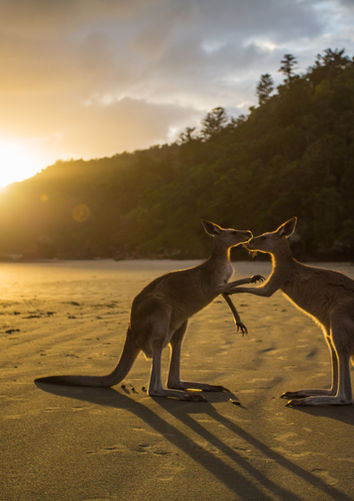

Australia Luxury Vacations
Designed for the World’s Most Discerning Travelers
Where Nature, Culture, and Luxury Converge Beautifully
Australia luxury vacations offer an experience of profound contrast and effortless elegance. A land of vivid blue seas, golden coastlines, ancient deserts, and cosmopolitan sophistication, Australia invites the traveler to slow down, look closer, and savor the extraordinary.
From private island sanctuaries on the Great Barrier Reef, to exclusive vineyard estates in the Barossa and Margaret River, to the quiet majesty of the Red Centre, this is a destination crafted for those who appreciate both wilderness and refinement — adventure and serenity — depth and delight.
At Travelwizard.com, we curate journeys through Australia that are immersive, seamless, and richly personal. With long-standing partnerships and Virtuoso-level access across the continent, we open doors to experiences few travelers ever encounter.
This is travel that feels effortless, meaningful, and deeply alive.
The Art of the Australian Journey
Whether you dream of:
-
A private beach villa overlooking turquoise reef waters
-
A gourmet pilgrimage through world-class wine country
-
A cultural immersion led by Indigenous hosts
-
Or a luxury Outback retreat surrounded by ancient sandstone and starlit skies
Your journey unfolds at your pace — unhurried, quietly luxurious, and always deeply cared for.
We arrange:
-
Private guides chosen for personality and insight
-
Seamless flights and private transfers
-
Elite boutique lodges and exclusive island resorts
-
Rich cultural and natural encounters curated specifically for you
-
Every detail reflects your style of travel — whether serene, adventurous, or indulgent.
Signature Australian Luxury Experiences We Curate
Great Barrier Reef Private Island Retreats
Barefoot elegance, astonishing marine life, private diving and snorkeling access.
Outback Wilderness & Desert Luxury Lodges
Stillness, vastness, firelight evenings, and the quiet beauty of ancient landscapes.
Wine Country Immersions
Private tastings, vineyard lunches, and culinary experiences hosted by local artisans.
Sydney & Melbourne Cultural Journeys
World-class dining, harbor living, contemporary art, and refined city sophistication.
Luxury Coastal Escapes
From the Whitsundays to Tasmania — ocean breezes, coastal walks, and relaxed indulgence.
Travelwizard’s Australian Legacy
As a Virtuoso member since 1998, our relationships grant:
-
Preferred access to elite island, lodge, and coastal properties
-
Personalized recognition upon arrival
-
Privately guided experiences unavailable to the general market
-
A standard of care grounded in decades of expertise
We don’t just send you to Australia.
We introduce you to its soul.
Begin Your Journey to Australia
Your story.
Your rhythm.
Your Australia.
Begin Your Private Consultation →

Start with our vacation planner so we can match you with our most suitable travel advisor. We do it all for you, air, car, accommodations, tours, you name, it in a seamless luxury vacation experience you will treasure for a lifetime.